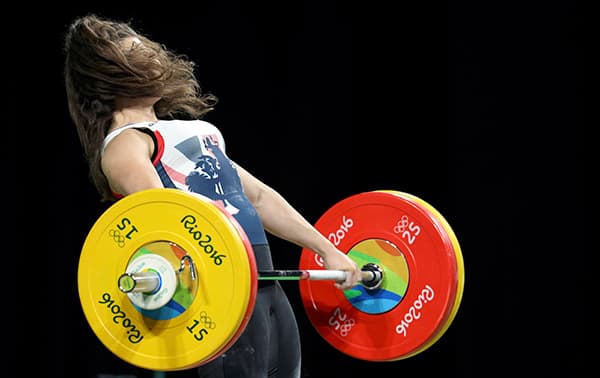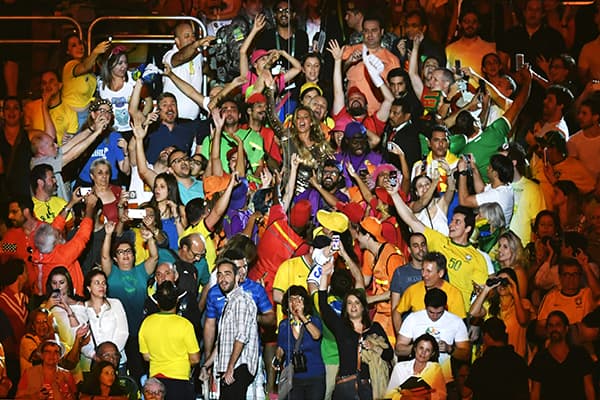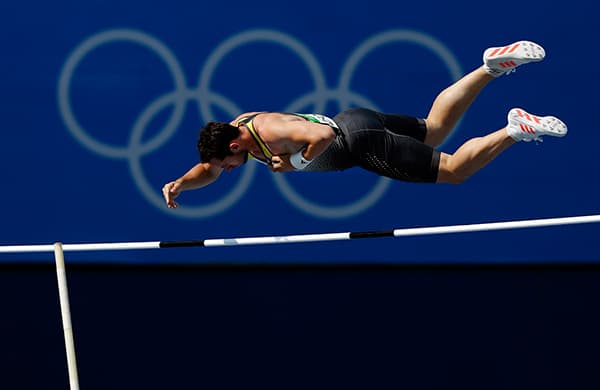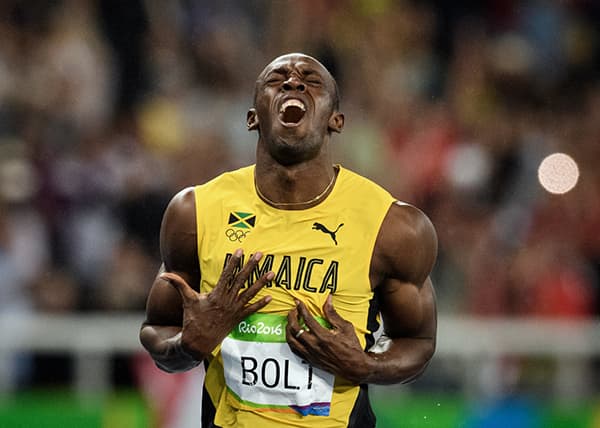Almost as improbable as Team GB’s amazing medal haul might have seemed a few weeks ago, I have to tell you that in recent years I have not really enjoyed the Olympics. Yes I watched them – I had to – but always through the eyes of someone to whom the spectacle has been part of the job rather than a source of enjoyment.
The Olympics is an arduous endeavour – even on a picture desk. It’s a challenging task being a Picture Editor, constantly juggling agendas, coping with disorienting time differences, losing hair over the often accelerated deadlines, all the while dealing with the hundreds of thousands of images. So much so, the Greatest Show on Earth can be quite a marathon – endured rather than enjoyed.
However, this time I’ve been relegated to the sidelines. And you know what? It’s been a blessing in disguise. I’ve had an epiphany; not only has it given me a chance to view the event anew, discovering an enthusiasm for sports I never knew existed, it’s also given a budding armchair athlete the chance to savour the stunning photographs from Britain’s best games in over one hundred years. What’s more, I even had time to ask some of Fleet Street’s finest to pick their favourite shots…
Paul Stewart, Daily Express
‘This is my third Olympics on the picture desk, and the number of images we are getting now is staggering,’ says Paul Stewart. ‘On average over 20,500 images are pouring in every day from the agencies in Rio, with so many images it’s hard to pick a best, or even favourite image. My list of special images changes day to day, my best so far is one of Laura Trott holding a Union Jack just seconds after winning Gold and becoming Britain’s most successful female Olympian.’
‘The image from Matthew Childs of Reuters shows the sweat on her face, it contains the raw emotion of the win. She is staring straight down the barrel and this is the sort of picture that connects to the readers. Our deadline for the first edition is 10:00pm, the race did not finish till 9:45 and images then had to be edited, captioned and wired half way round the world.’
‘As images came in I put them over, we had one on the page but at 10:01 this picture dropped in and leapt of the screen. I got to shout the classic “Hold the Front Page” thing and just squeaked the picture onto the front of the edition.’

Paul Stewart is the Night Picture Editor of the Daily Express and still shoots news and feature pictures. He is also a brand ambassador for Domke Camera Bags. You can see his work at: www.paulstewartphoto.co.uk
Stuart Robinson, Express Newspapers
‘My Olympic photographic career started in Atlanta in 1996 with one Gold Medal, and finished in London 2012 where team GB won 29. And now after nearly 40 years on the road I have hung up my cameras to become a desk jockey,’ says Stuart Robinson. ‘As Sport Pictures Editor at Express Newspapers I have to sift through the thousands of images sent out every day from Rio 2016.’
‘There are so many iconic pictures that come from every event that it is almost impossible to pick one over another. Emotions range from ecstasy to sheer dejection – the result of so much hard work focused on one monumental performance, or failure in front of millions of watching eyes.’
‘It would be easy to go for a picture of Usain Bolt or teenage sensation Simone Biles, sports photography should illustrate events, record performances, but also amuse and entertain so I have gone for a quirky picture that made me chuckle.’
‘This frame of team GB Rebekah Tiler in the 69kg weightlifting final just hit the spot for me, it is a little bit left field and is a nice distraction from the repetitive finish line, gold medal and crying pictures that fill the computer screens 24/7.’
‘My job is to make the readers stop, look and then read the newspaper copy and if I can’t do that during one of our most successful Olympics, then I never will.’

Stuart Robinson is a former photographer who now works as Sport Picture Editor at Express Newspapers.
Kevin Hayes, The Sunday Times
‘I was Picture Editing the paper the first weekend of the Olympics and this shot caught my eye,’ says Kevin Hayes. ‘Maybe it’s an odd choice, considering the huge number of brilliant sports photos the games have produced this time but this picture of Gisele amongst the crowds in the stadium by Fabrice Coffrini stuck out.’
‘As a Sunday paper we wanted to do a spread on the opening ceremony, even though the Saturday papers covered the spectacle in their later editions. By the time I got into the office at 7am over 10,000 pictures of the ceremony had already been filed to us by the main wire agencies. We needed a fresh angle and when we came to lay out the spread I’d whittled the selection down to 60 or so images.’
‘All the Saturday papers had run shots of Gisele on the catwalk and this picture gave a fresh perspective on the event.’
‘It’s not a perfect picture, technically speaking: the photographers were obviously kept at a distance from the action so there’s lots of digital noise, and the cable bisecting the picture is annoying, but the colours, chaotic energy, and the people taking selfies engaged me.’
‘Of course, as with many Picture Editors’ favourite pictures it didn’t make the paper, and Gisele was replaced on the layout by the oiled up Tongan twitter sensation.’

Kevin Hayes is Deputy Picture Editor of the Sunday Times.
Adrian Dennis, Agence France-Presse
‘Shooting an Olympic Games is the pinnacle for a sports photographer,’ says renowned sports photographer Adrian Dennis. ‘However, it’s not easy! Rio 2016 has been really tough. The hours are long, it’s hot and we’re lugging tons of gear around. The schedule here has been brutal for us! Or perhaps I’m getting old.’
‘But all those factors combined with competing against hundreds of sports photographers from around the world trying to make an incredible image is a real challenge. Choosing my best image is hard, in truth I haven’t had chance to look at most of my work. As soon as I shoot 30-40 images at the athletics track I’m transmitting to an editor who promptly crops and captions and sends them to our clients worldwide.’
‘The pole vault picture is fairly decent, it’s “clean”. A term we use all the time. The image is simple, there are no distractions. Trying to isolate the subject has been difficult here, the stadium has loads of white railings and concrete, none of which you wants in an action photograph. In comparison London 2012 was a dream!’

Adrian Dennis is a staff photographer with Agence France-Presse. You can see more of his work at www.adriandennis.com
Andre Camara, The Times
‘The first time I photographed Usain Bolt he had just won the 100m, but he didn’t celebrate that much as he crossed the line,’ says legendary photographer Andre Camara. ‘Just a serious expression while holding one finger up, followed by a very quick bang on his chest which didn’t produce much emotion.’
‘The next time I photographed him in the 200m, when he really celebrated as he crossed the line and I was straight onto him. This powerful Bolt moment was a fraction of a-second among others that I caught, but this was at the peak of his jubilation.’
‘I watched the line crossing again on TV and was amazed how quick this powerful moment was and how lucky I was to catch it. Despite me being in the very right place, (a bit to the side), him turning face on to me, and having the best sports camera with the best 600m – I was lucky- I caught the magic. Practice, experience and technique were essential but a good photographer is a lucky photographer. So this is one of my favourites…’

Andre Camara is a freelance photographer who works for the Times. You can see more of his work at www.andrecamara.com and www.instagram.com/andrepix/







